Paulo Pereira is the leader of the Cell Growth and Differentiation Group at the i3S since 2013. He has a PhD degree in Cell Biology by the University College London (2002), and during his Ph.D, he was a recipient of a "Gulbenkian Foundation PhD Program in Biology and Medicine" fellowship. During his post-doc with Fernando Casares (IBMC, Porto - CABD, Seville) he studied Drosophila eye development and established a genetic model to study basic mechanisms in cancer. P. Pereira has nearly 20 years of expertise in the Drosophila field, combining functional genomics with molecular approaches to study the control of cell proliferation and differentiation. Mainly focusing on the developing retina as a model, he has contributed to the characterisation of novel signaling mechanisms and genetic regulators, in particular of the Myc and TGFbeta pathways. He is also interested in neuron-glia crosstalk and in using Drosophila as a model to human disease. P. Pereira published 17 articles in journals, 8 as senior author. Supervised 5 PhD theses (2 as co-supervisor), and 3 Post-docs.
Selected Publications
Feedback control of organ size precision is mediated by BMP2-regulated apoptosis in the Drosophila eye. PLoS Biology22(1):, 2024. [Journal: Article] [CI: 4] [IF: 7.2]
DOI: 10.1371/journal.pbio.3002450 SCOPUS: 85183785216
Tavares L., Grácio P., Ramos R., Traquete R., Relvas J.B., Pereira P.S.
The Pebble/Rho1/Anillin pathway controls polyploidization and axonal wrapping activity in the glial cells of the Drosophila eye. Developmental Biology473:90-96, 2021. [Journal: Article] [CI: 1] [IF: 3,1]
DOI: 10.1016/j.ydbio.2021.02.002 SCOPUS: 85101016149
Pinho M., Macedo J.C., Logarinho E., Pereira P.S.
NoL12 repression induces nucleolar stress-driven cellular senescence and is associated with normative aging. Molecular and Cellular Biology39(12):, 2019. [Journal: Article] [CI: 13] [IF: 3,6]
DOI: 10.1128/MCB.00099-19 SCOPUS: 85066485467
García-Morales D., Navarro T., Iannini A., Pereira P.S., Míguez D.G., Casares F.
Dynamic Hh signalling can generate temporal information during tissue patterning. Development146(8):, 2019. [Journal: Article] [CI: 7] [IF: 5,6]
DOI: 10.1242/dev.176933 SCOPUS: 85065344120
Eusebio N., Tavares L., Pereira P.
CtBP represses Dpp-dependent Mad activation during Drosophila eye development. Developmental Biology442(1):188-198, 2018. [Journal: Article] [CI: 4] [IF: 2,9]
DOI: 10.1016/j.ydbio.2018.07.018 SCOPUS: 85050401082
Tavares L., Correia A., Santos M.A., Relvas J.B., Pereira P.S.
dMyc is required in retinal progenitors to prevent JNK-mediated retinal glial activation. PLoS Genetics13(3):, 2017. [Journal: Article] [CI: 8] [IF: 5,5]
DOI: 10.1371/journal.pgen.1006647 SCOPUS: 85016620416
Neto M., Naval-Sánchez M., Potier D., Pereira P.S., Geerts D., Aerts S., Casares F.
Nuclear receptors connect progenitor transcription factors to cell cycle control. Scientific Reports7(1):, 2017. [Journal: Article] [CI: 12] [IF: 4,1]
DOI: 10.1038/s41598-017-04936-7 SCOPUS: 85021927654
Martins T., Eusebio N., Correia A., Marinho J., Casares F., Pereira P.S.
TGFβ/Activin signalling is required for ribosome biogenesis and cell growth in Drosophila salivary glands. Open Biology7(1):, 2017. [Journal: Article] [CI: 12] [IF: 3,3]
DOI: 10.1098/rsob.160258 SCOPUS: 85012931855
Tavares L., Pereira E., Correia A., Santos M.A., Amaral N., Martins T., Relvas J.B., Pereira P.S.
Drosophila PS2 and PS3 integrins play distinct roles in retinal photoreceptors-glia interactions. GLIA63(7):1155-1165, 2015. [Journal: Article] [CI: 11] [IF: 6]
DOI: 10.1002/glia.22806 SCOPUS: 84928206519
Marinho J., Martins T., Neto M., Casares F., Pereira P.S.
The nucleolar protein Viriato/Nol12 is required for the growth and differentiation progression activities of the Dpp pathway during Drosophila eye development. Developmental Biology377(1):154-165, 2013. [Journal: Article] [CI: 15] [IF: 3,6]
DOI: 10.1016/j.ydbio.2013.02.003 SCOPUS: 84876321493
Caldeira J., Simões-Correia J., Paredes J., Pinto M.T., Sousa S., Corso G., Marrelli D., Roviello F., Pereira P.S., Weil D., Oliveira C., Casares F., Seruca R.
CPEB1, a novel gene silenced in gastric cancer: A Drosophila approach. Gut61(8):1115-1123, 2012. [Journal: Article] [CI: 43] [IF: 10,7]
DOI: 10.1136/gutjnl-2011-300427 SCOPUS: 84863719147
Marinho J., Casares F., Pereira P.S.
The Drosophila Nol12 homologue viriato is a dMyc target that regulates nucleolar architecture and is required for dMyc-stimulated cell growth. Development138(2):349-357, 2011. [Journal: Article] [CI: 21] [IF: 6,6]
DOI: 10.1242/dev.054411 SCOPUS: 78751553525
Martin D., Pantoja C., Fernández-Miñán A., Valdes-Quezada C., Moltó E., Matesanz F., Bogdanović O., De La Calle-Mustienes E., Domínguez O., Taher L., Furlan-Magaril M., Alcina A., Cañóon S., Fedetz M., Blasco M.A., Pereira P.S., Ovcharenko I., Recillas-Targa F., Montoliu L., Manzanares M., Guiǵo R., Serrano M., Casares F., Gómez-Skarmeta J.L.
Genome-wide CTCF distribution in vertebrates defines equivalent sites that aid the identification of disease-associated genes. Nature Structural and Molecular Biology18(6):708-714, 2011. [Journal: Article] [CI: 75] [IF: 12,7]
DOI: 10.1038/nsmb.2059 SCOPUS: 79958834622
Pereira P.S., Teixeira A., Pinho S., Ferreira P., Fernandes J., Oliveira C., Seruca R., Suriano G., Casares F.
E-cadherin missense mutations, associated with hereditary diffuse gastric cancer (HDGC) syndrome, display distinct invasive behaviors and genetic interactions with the Wnt and Notch pathways in Drosophila epithelia. Human Molecular Genetics15(10):1704-1712, 2006. [Journal: Article] [CI: 31] [IF: 8,1]
DOI: 10.1093/hmg/ddl093 SCOPUS: 33745184835

